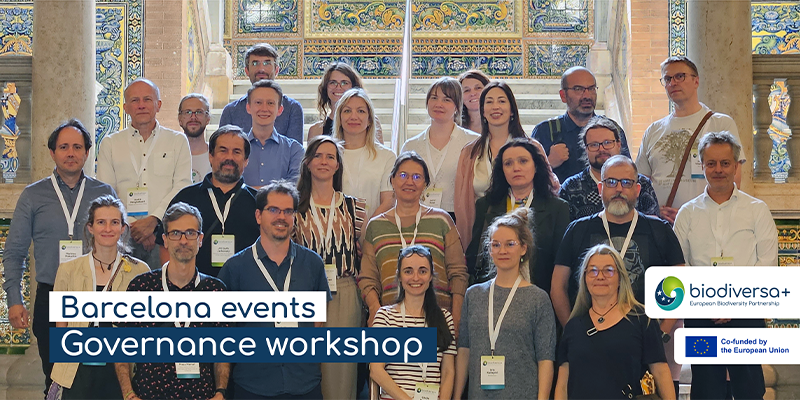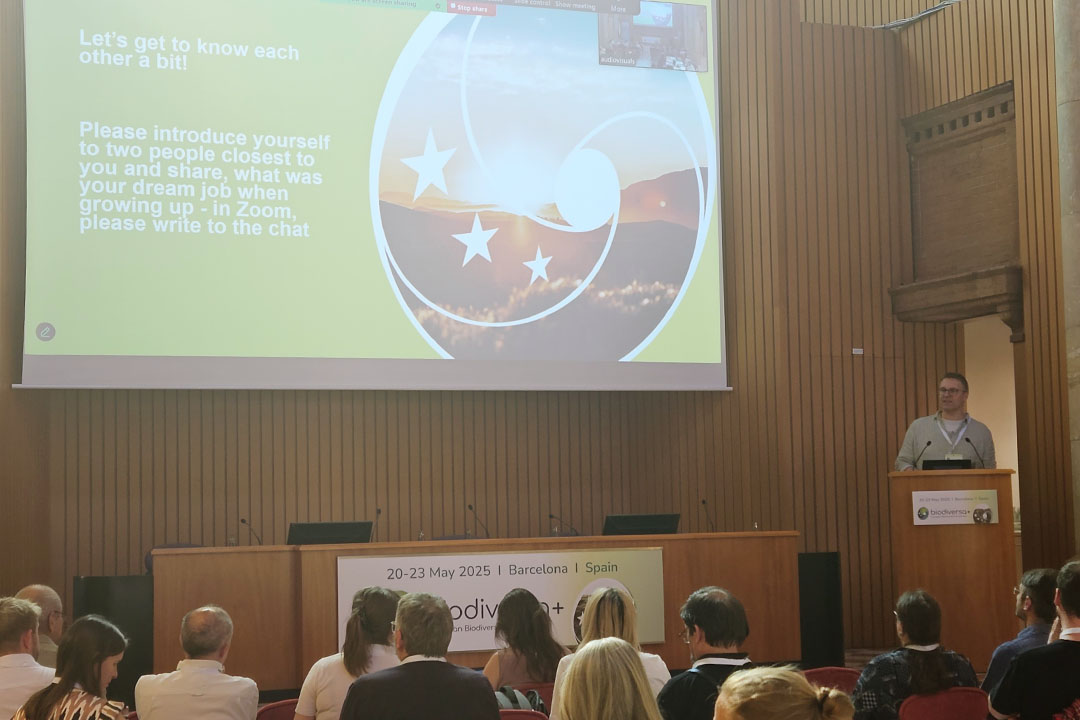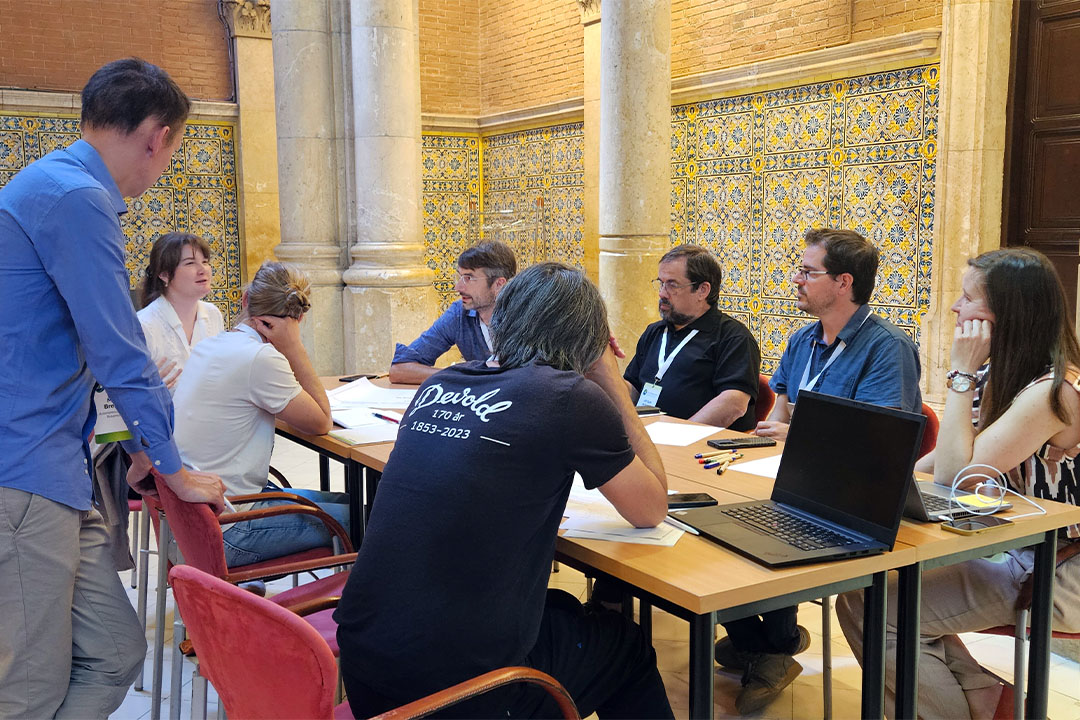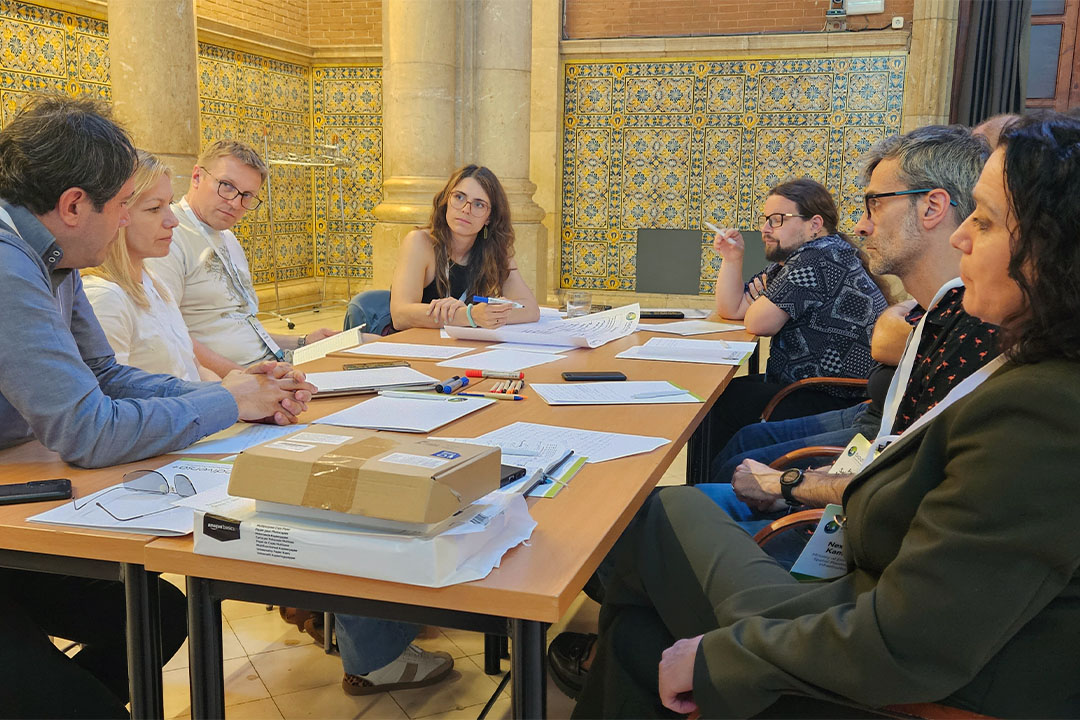On 20 May 2025, Biodiversa+ organised a governance-focused workshop alongside the Barcelona Science Fair, bringing together experts from across Europe to support the development of a coordinated European biodiversity monitoring framework.
A unified vision: EBOCC, NBMCCs, and Thematic Hubs
Effective biodiversity monitoring depends on cross-border cooperation to ensure data comparability, inform policy, and enable coordinated responses.
At the European level, the proposed European Biodiversity Observation Coordination Center (EBOCC) aims to harmonise monitoring efforts and establish a shared framework. Its goals include delivering policy-relevant data on key Essential Biodiversity Variables (EBVs), promoting a FAIR (Findable, Accessible, Interoperable, Reusable) data approach, and making better use of existing information.
To support this, Biodiversa+ partners developed the concept of National Biodiversity Monitoring Coordination Centres (NBMCCs), a flexible national model aligned with the EBOCC. These centres would supply monitoring data and national perspectives, while receiving support in implementation, funding, and EU reporting. Thematic Hubs complement the system as transnational expert networks that foster collaboration, harmonise protocols, build capacity, and deliver European-level analysis.
The workshop offered participants a space to explore this coordination model and share their experiences, painting a nuanced picture of both momentum and barriers across Europe. The following reflections, drawn from a few of the workshop’s participants, illustrate the diversity of national contexts and shared challenges discussed during the event.
Austria
Katharina Huchler from the Environment Agency Austria described a complex, project-based monitoring landscape involving multiple ministries, federal states, and actors in research and implementation. To address this fragmentation, the Agency, which already carries out multiple ongoing monitoring programmes, is now developing a national monitoring concept to map existing programmes, identify gaps, and define future priorities. Huchler pointed to “gaps and overlaps” and “unclear data responsibilities” as major challenges, and sees a national coordination centre as a way to improve clarity and integration.
Establishing such a centre, she noted, requires a shift in mindset: “It’s crucial to remember that we’re building on something that has developed over a long time… stakeholder management is really important to gain support and avoid duplication.” She sees Biodiversa+ as a key space for learning and a potential advocate for change: “It’s crucial that Biodiversa+ helps lobby for these national centres at the European level.”
Czech Republic
In the Czech Republic, Karel Chobot of the Nature Conservation Agency (NCA CZ) explained that the agency already functions as a de facto coordination centre, largely due to obligations under EU nature directives. Acting as the holder and administrator of the Czech national biodiversity portal, the agency collects and manages habitat and species data.
However, Chobot highlighted that biodiversity monitoring remains confined to nature conservation. Many institutions, particularly in sectors like agriculture, forestry, and pest control, collect data independently, without integration into a broader framework. “Common agreement on the role of such a centre and recognition across sectors is still a challenge,” he said.
Strengthening the agency’s role would require national-level policy support, lobbying, and diplomacy. While Biodiversa+ could help symbolically, Chobot emphasised the need for more formal backing: “The European Commission formulating common recommendations or best practice examples, especially with funding—that would be a real impulse.”
Croatia
Petra Rodić, from the Institute for Environment and Nature within the Croatian Ministry of Environmental Protection and Green Transition, explained that the Institute already performs many coordination tasks related to biodiversity monitoring. These include designing monitoring programmes, managing biodiversity data, from collection and analysis to reporting under EU and international frameworks, and overseeing national databases, including the Croatian GBIF node. However, without a formal mandate and adequate human resources, it cannot fully function as a national coordination centre. “The biggest shift needed,” she noted, “is recognising that stable, long-term and effective monitoring that provides relevant information for policymakers across all sectors requires a dedicated body.”
Reflecting on the workshop, Rodic found it reassuring that “a lot of other countries are struggling with the same thing,” and noted that participants shared “very similar ideas on how to proceed and what we need to do to harmonise our monitoring.” She stressed the value of the Biodiversa+ network, particularly for smaller countries like Croatia: “It gives us the support and legitimacy we couldn’t build alone. We need to keep this collaboration going, no matter the future format.”
While Biodiversa+ has helped lay the groundwork by fostering connections and agreeing on methods, she called for stronger communication of results to national decision-makers, along with more lobbying and visible support, especially from EU and larger partners.
Catalonia
Pau Sainz of the Catalan Government described a decentralised but legally recognised network that brings together 25 institutions, including universities, research centres, NGOs, and public bodies. The network focuses on structuring fragmented data, conducting analyses, and producing key outputs such as the State of Nature in Catalonia report. “Our biggest success,” he noted, “is bringing all these institutions together to move beyond data collection and into joint evaluation.”
Managing such a diverse group remains a challenge, particularly in balancing the differing needs of researchers and policymakers. Early on, political buy-in was also a hurdle, but while awareness has improved, Sainz warned that “with crises in rural areas and global conflicts, nature conservation risks falling off the political agenda.”
Although Catalonia is a subnational entity, it is actively aligning with European objectives. Sainz sees Biodiversa+ as “a very good opportunity to see how other countries, especially other subnational actors, are working on this,” and as a valuable source of support in developing common standards and integrating new technologies.
Cross-cutting challenges
Despite different contexts, the discussions revealed a shared set of challenges, such as fragmented funding, lack of institutional clarity, limited cross-sector engagement, and a general absence of stable mandates. However, there is also a shared recognition that these challenges are not insurmountable. Many countries face similar issues and are motivated to solve them together.
Participants voiced a clear need for more peer learning and the exchange of best practices, particularly around governance models. They called for structured support in engaging stakeholders and improving communication strategies, as well as stronger political and symbolic advocacy, especially from the European Commission. A recurring message was the importance of maintaining collaboration beyond the current scope of Biodiversa+.
The workshop confirmed that while building a coordinated European biodiversity monitoring network is complex, progress is well underway. National efforts, whether emerging or more advanced, are aligning toward a shared vision, with practical models now being tested and refined across Europe. By fostering trust, shared learning, and strategic coordination, Biodiversa+ continues to turn the ambition of integrated biodiversity monitoring into tangible, continent-wide progress.
Curious about Biodiversa+’s approach to biodiversity monitoring governance?
Petteri Vihervaara, lead of the monitoring work, shares key insights on its vision and progress.








